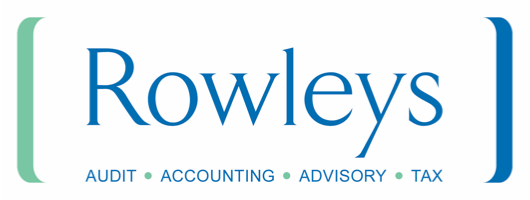News & Events
Budget 2025 predictions: What could be on the horizon?
20th October 2025
With the Budget due to be announced on 26th November 2025, speculation is growing about what is likely to be announced. In this article, Rowleys tax and payroll experts share their key Budget 2025 predictions.
Personal tax and National Insurance Contributions (NICs)
We may see the freeze on income tax allowances and National Insurance thresholds extended beyond April 2028. This would mean that as wages increase, more workers are gradually drawn into higher tax bands, a process often referred to as “fiscal drag.”
There is also talk of a 1–2% reduction in employee NIC rates, paired with a corresponding increase in the basic rate of income tax (currently 20%).
While this might initially sound like a tax cut, the aim appears to be to collect more revenue from individuals with property income and pensioners who do not usually pay NICs. Employees would see little change to their overall take-home pay, but those with additional income sources could end up paying more.
Individual Savings Accounts (ISAs)
The annual ISA limit of £20,000 has remained unchanged since 2017, and this year’s Budget could finally bring a shift.
One possibility is a reduction in the overall tax-free ISA limit, though it may instead apply specifically to the cash ISA component, keeping the stocks and shares ISA unchanged.
This move would align with the government’s focus on encouraging longer-term investment over cash savings.
Capital Gains Tax (CGT)
Capital Gains Tax could be an area of significant reform. Potential changes include:
- Eliminating the current £3,000 annual exemption altogether.
- Increasing CGT rates or aligning them with income tax rates.
- Removing Private Residence Relief for high-value homes over £1.5 million.
- Abolishing the tax-free uplift on death where Inheritance Tax has not been paid on the same asset.
If implemented, these measures would mark one of the most substantial overhauls of capital taxation in recent years.
Value Added Tax (VAT)
A reduction of the VAT registration threshold to £30,000 is a strong possibility.
This would mean more small businesses being required to register for VAT, aligning the threshold with the new Making Tax Digital (MTD) limit, which drops to £30,000 from April 2027.
While this could increase the administrative burden on microbusinesses, it may also encourage digital recordkeeping and compliance across the board.
Inheritance Tax (IHT) and Reliefs
The government could tighten existing IHT rules, particularly around lifetime gifts, by:
- Extending the Potentially Exempt Transfer (PET) period from 7 to 10 years.
- Removing the exemption for gifts made from surplus income.
- Introducing a lifetime allowance for total gifts made.
On a more positive note, there may be an increase in the limit for Agricultural and Business Property Relief (APR/BPR) to £5 million, supporting family-owned and rural enterprises.
Tax Partner, Mark Hook, comments: “After several years of speculation about Inheritance Tax reform, the government may now focus on tightening reliefs rather than cutting rates, reinforcing the importance of early estate planning.”
Pensions
Pension reform remains high on the agenda. Potential measures could include:
- Reducing or abolishing higher-rate tax relief on pension contributions.
- Capping the 25% tax-free lump sum on withdrawals from the current £268,275 to around £100,000.
- Removing NI advantages from salary sacrifice arrangements, which currently benefit both employees and employers.
Any of these moves would reshape retirement planning and could significantly impact higher earners.
Stamp Duty and property taxation
One of the more radical proposals under discussion is abolishing Stamp Duty Land Tax (SDLT) and replacing it with a Property Value Tax (sometimes dubbed a “Mansion Tax”).
This would involve an annual charge on high-value properties rather than a one-off payment at purchase. Alongside this, council tax reform may also be introduced to modernise the property taxation system.
Excise duties and cost of living measures
We expect to see increases in duties on petrol and gambling as part of the government’s wider health and environmental agenda.
Meanwhile, pay-related measures could include:
- A rise in the National Living Wage from £12.21 to around £12.70 per hour in April 2026.
- An increase in the National Minimum Wage for 18–20-year-olds from £10 to £11.50 per hour.
Employers could also see NIC threshold adjustments and a possible increase to the Employment Allowance from £10,500 to £12,000, providing some relief for smaller businesses.
Additionally, auto-enrolment reforms (long discussed) may finally be confirmed, lowering the minimum age to 18 and removing the lower earnings limit.
The Budget 2025 – What happens next?
With speculation mounting, this Budget is likely to focus on broadening the tax base and simplifying reliefs, rather than introducing sweeping tax cuts.
As always, we’ll be analysing the announcements in full when the Chancellor delivers the Budget, outlining what they mean for individuals and businesses alike.
If you’d like to discuss how potential changes might affect you, please contact our friendly team.
